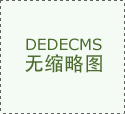一般将来时反义疑问句的用法遵循以下规则:
一、基本结构
反义疑问句由两部分组成:
陈述句:
使用一般将来时,结构为“主语 + will + 动词原形”
疑问部分:
根据陈述句的谓语动词选择助动词,并用否定形式+主语构成
二、疑问部分的动词形式选择
行为动词:使用助动词 will(如:He will call you)
情态动词:根据情态动词选择 can(如:She can finish the task)
三、常见用法示例
肯定句 + 否定疑问句
- The meeting starts at 3 PM, won'tit?
- The company will launch the new product, aren'tthey?
否定句 + 肯定疑问句
- The project won't be delayed, will it?
- You didn't finish your homework, did you?
四、注意事项
主语变化
- 陈述句主语为第一人称/第二人称时,疑问部分用 you(如:You will travel tomorrow, won'tyou?)
- 陈述句主语为第三人称时,疑问部分用 he/she/it(如:He will attend the conference, won'the?)
缩略形式
- 可以使用缩略形式 won't you(如:The movie starts at 7 PM, won'tyou?)
特殊场景
- 含否定意义的词:
如 little(几乎没有)、 few(几乎没有)等,需根据语境判断是否需要倒装
五、错误用法示例
will后接动词原形:He will go to the party, doesn'the?(错误,应为 won't he?)
疑问部分时态错误:The meeting will start at 3 PM, isn'tit?(错误,应为 won't it?)
通过以上规则和示例,可以系统掌握一般将来时反义疑问句的构造与用法。


